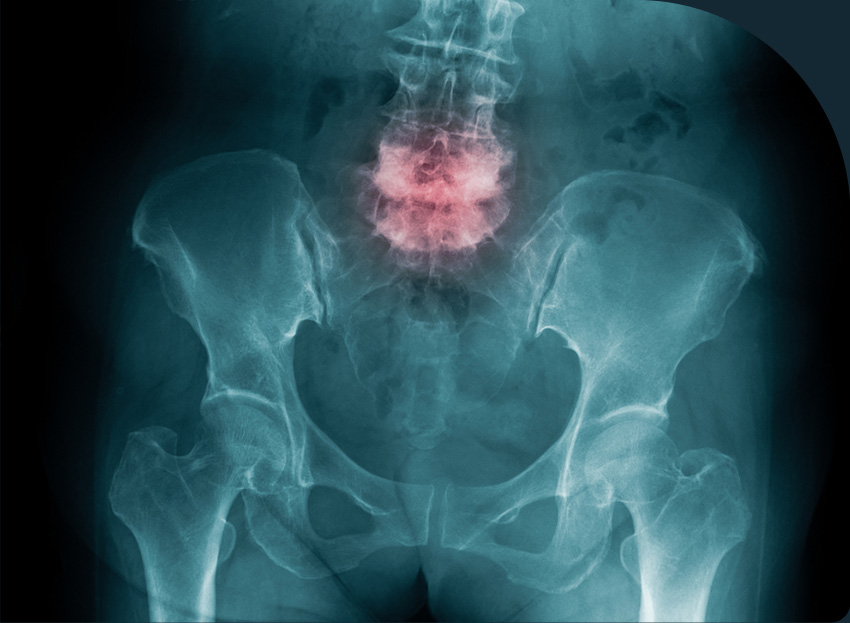While a fracture anywhere in the body is a cause for concern, a spinal fracture is especially serious because it can result in extensive damage, including to the spinal cord itself, and severe pain. If you’ve experienced spinal trauma, whether from a car accident, a fall or another injury, you should be evaluated by a spine specialist. As a top Long Island spine surgeon, Dr. Choi has the expertise and knowledge to create a personalized treatment plan aimed at helping you recover from a spinal fracture and preventing more serious complications from occurring.

About Spine Fractures
The spine consists of 33 vertebrae (bones) and any of them can be fractured. Spine fractures often happen because of a fall, sports injury, car accident or osteoporosis. It’s important to seek medical attention after any significant trauma to the head, neck or spine.
A spinal fracture or injury:
- isn’t always apparent right away.
- puts the spinal cord, nerves and discs at risk for damage.
- should be evaluated immediately by a spine specialist to prevent more serious complications.
Symptoms of a Spine Fracture
Even after an accident or another type of trauma, a spinal fracture might not cause any pain. Though you may not realize you have a fracture, it can still lead to complications. This is why immediate evaluation is so important.
For patients who do have symptoms, the specific symptoms and where they’re felt in the body will depend on the type, location and extent of the fracture or injury. The most common symptoms are:
- Sudden, severe pain
- Swelling
If the spinal fracture is putting pressure on a nerve or the spinal cord, you could also experience:
- Tingling, numbness or weakness
- Muscle spasms
- Bladder or bowel problems
- Difficulty moving or loss of feeling in the parts of your body below the site of the injury


How is a Spinal Fracture Diagnosed
Discussion With Dr. Choi
Dr. Choi will talk with you about your symptoms and whether or not an obvious trauma led to your pain. He’ll also go over your medical history and any test results, if applicable. In cases of an emergency visit for a spinal fracture, he may provide pain relief and stabilize your spine to prevent further damage at this point.
Exam
Dr. Choi will perform a comprehensive exam. This will let him identify the extent and severity of the damage and pinpoint where the fracture is located.
Imaging Tests
In most cases, Dr. Choi will order an x-ray so he can get a clear picture of your fracture. Additional tests, such as an MRI, may also be needed.

Types of Spinal Fractures and Treatments
Treatment for a spinal fracture is dependent on how severe the injury is, where it’s located and the type of fracture. Once Dr. Choi has an accurate diagnosis, he’ll explain it to you in detail. He’ll then discuss your treatment options with you and go over the risks and benefits of each one, so you can decide on the best course of action together.
The most common types of spinal fractures Dr. Choi treats at Spine Medicine & Surgery of Long Island are:
Compression Fracture
A compression fracture in the spine, also known as a vertebral compression fracture, usually occurs when osteoporosis or another condition, such as cancer, weakens the bones. A compression fracture can be asymptomatic, which is why they aren’t always diagnosed early. In other cases, however, this type of fracture causes a loss of height, pain and/or spinal deformities, such as a hump.
Treating a Compression Fracture
Sometimes, compression fractures can be treated without surgery by using a brace. If the brace doesn’t work, our Long Island orthopaedic spine surgeon may recommend a minimally invasive surgery, known as kyphoplasty.
When performing the procedure, Dr. Choi will make a small incision above the site of the injury. He’ll then insert a tube into the fractured vertebrae using x-ray guidance. Finally, he’ll inject the cavity with bone cement to create an internal cast. This stabilizes the vertebrae and reduces the fracture.
Chance Fracture
When the upper body is thrust forward with a great amount of force, the stress placed on the spine can cause a fracture, called a Chance fracture. This type of spinal fracture is often associated with car accidents. The most common symptom is severe back pain that gets worse when moving.
Treating a Chance Fracture
For a mild fracture, bracing could be effective for reducing the fracture. If you have a more severe injury where the spinal cord or posterior ligaments are also damaged or the spine is unstable, decompression and stabilization with surgery will likely be necessary. During the procedure, Dr. Choi will use titanium rods and screws to stabilize the spine.
Less Pain, More Living
Find out how we can help you achieve freedom from pain. To get started, schedule a consultation with our Long Island spine surgeon today!



